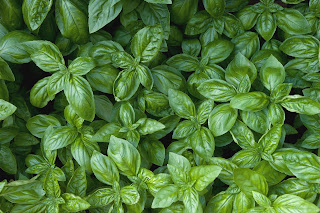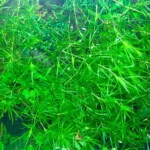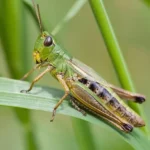
Basil, also called great basil, is a culinary herb from the mint family (Lamiaceae). Basil comes from tropical regions from Central Africa to Southeast Asia. It is a delicate plant and is used in cooking around the world. Basil is also often cultivated for ornamental purposes. There are many types of basil as well as several related species or hybrids also called basil.
Sweet basil is also called Genoese Basil, it has a sweet aroma with a warm flavor with notes of clove and anise.
Depending on the variety, basil can grow 12 to 51 inches in height.
Purple Basil is beautiful, highly aromatic with purple leaves and pink flowers.
Basil has light green, silky leaves that are oval in shape. Leaves are oppositely arranged on the stem. Some varieties of basil have purple leaves.
Cinnamon Basil is native to Mexico with a sweet scent and cinnamon notes. It has pink flowers and purple flushed leaves.
Basil develops miniature flowers that appear in spikes on top of a plant. They can be white, pinkish or mauve in color.
African Blue Basil is peppery and minty with purple flowers and green purple leaves.
Flowers are pollinated by insects. After successful pollination, each flower turns into dry fruit called achene.
Lettuce Basil has wrinkled large leaves and perfect for salads that is popular in Southern Italy.
Basil can be propagated via seed and plant cuttings.
Licorice Basil is an Asian decorative plant.
Flower and leaves are edible, but leaves are more often in use. Leaves are rich in essential oils which are responsible for the specific flavor of the plant. When flowers appear on the plant, stem becomes rough and production of essential oils ceases. Because of that, people often remove flower buds to prolong lifespan and freshness of the leaves.
Holy Basil is the essential ingredient of the Thai dish “Stir-fried chicken with chili peppers and basil”.
Each type of basil has unique aroma. Sweet basil has clove-like aroma, lemon basil has lemony taste while cinnamon basil has sweet, cinnamon-like aroma.
Lemon Basil has a fresh lemony fragrance perfect for salads.
Besides its aroma, basil has high nutritional value. Basil is rich source of vitamins A, B6, C and K and minerals such as iron, manganese and magnesium.
Thai Lemon Basil or Hairy Basil has a lemony-peppery flavor.
Basil can be used fresh or in a dry form. It is especially important part of Italian cuisine. Most people use basil for dishes made of tomato, pesto, soups, salads and dishes made of chicken meat.
Lime Basil has a lime flavor and is great in salads and with seafood.
Even though basil is mostly used for the preparation of salty dishes, fresh leaves can be used as ingredient for the preparation of chocolate and ice-creams in some parts of the world.
The dried leaves of the common basil are less fragrant and more pungent in flavour.
Basil is used in folk medicine (usually in the form of tea) for treatment of constipation, flatulence, stomach cramps, anxiety, and depression.
The plant is extremely frost-sensitive and grows best in warm climates.
Latest studies revealed that basil has antimicrobial, antiviral and antioxidant properties and that it may be useful in cancer treatment.
Basil is susceptible to Fusarium wilt, blight, and downy mildew, especially when grown in humid conditions.
Basil contains chemicals which repel insects. Certain experiments showed that basil is toxic for mosquitoes.
The small flowers are borne in terminal clusters and range in colour from white to magenta.
Basil is used for the preparation of holy water in orthodox churches in Bulgaria, Romania, Macedonia and Serbia.
Basil tea is a stimulant.
Basil is annual plant which means that it finishes its life cycle in one year.







